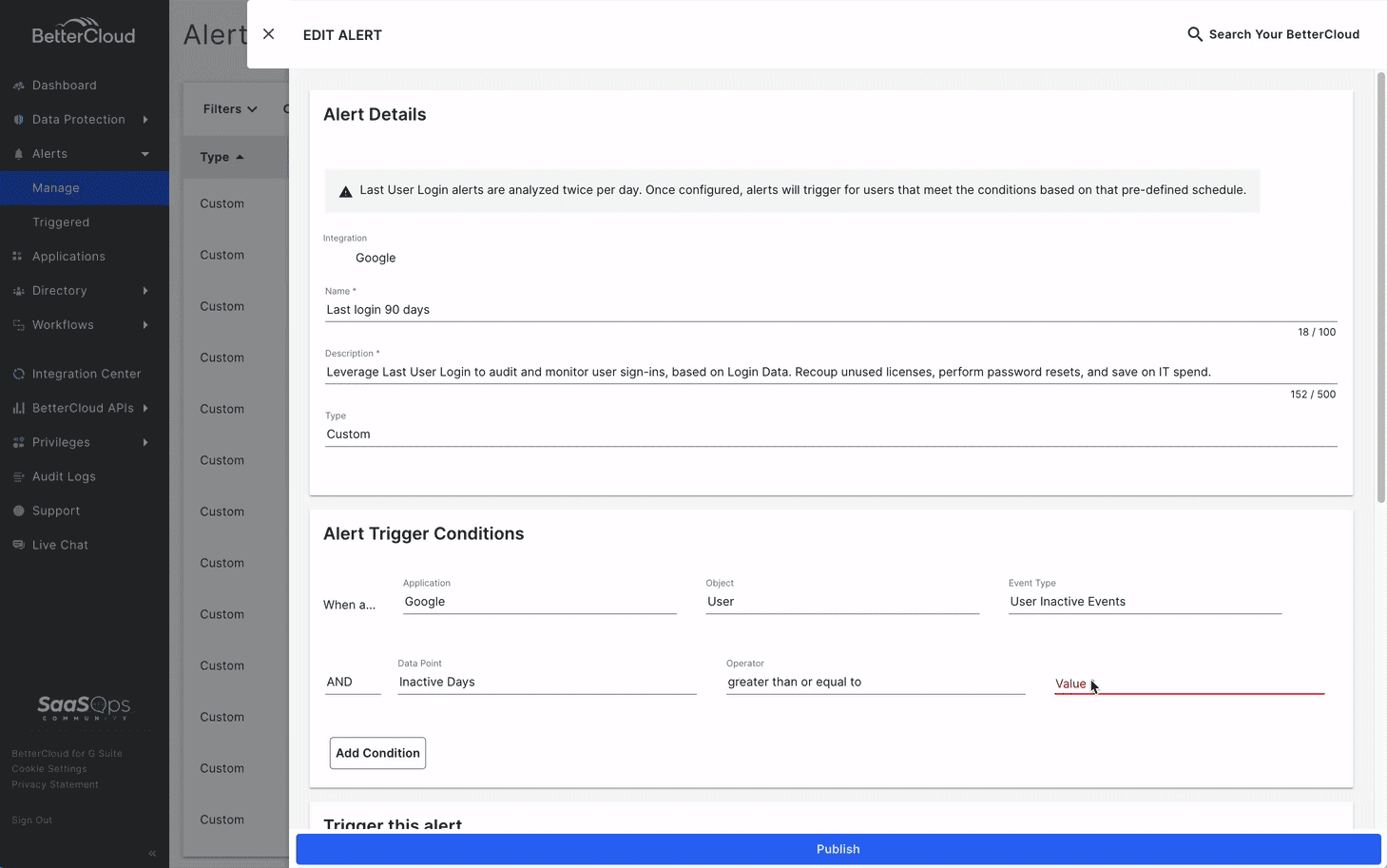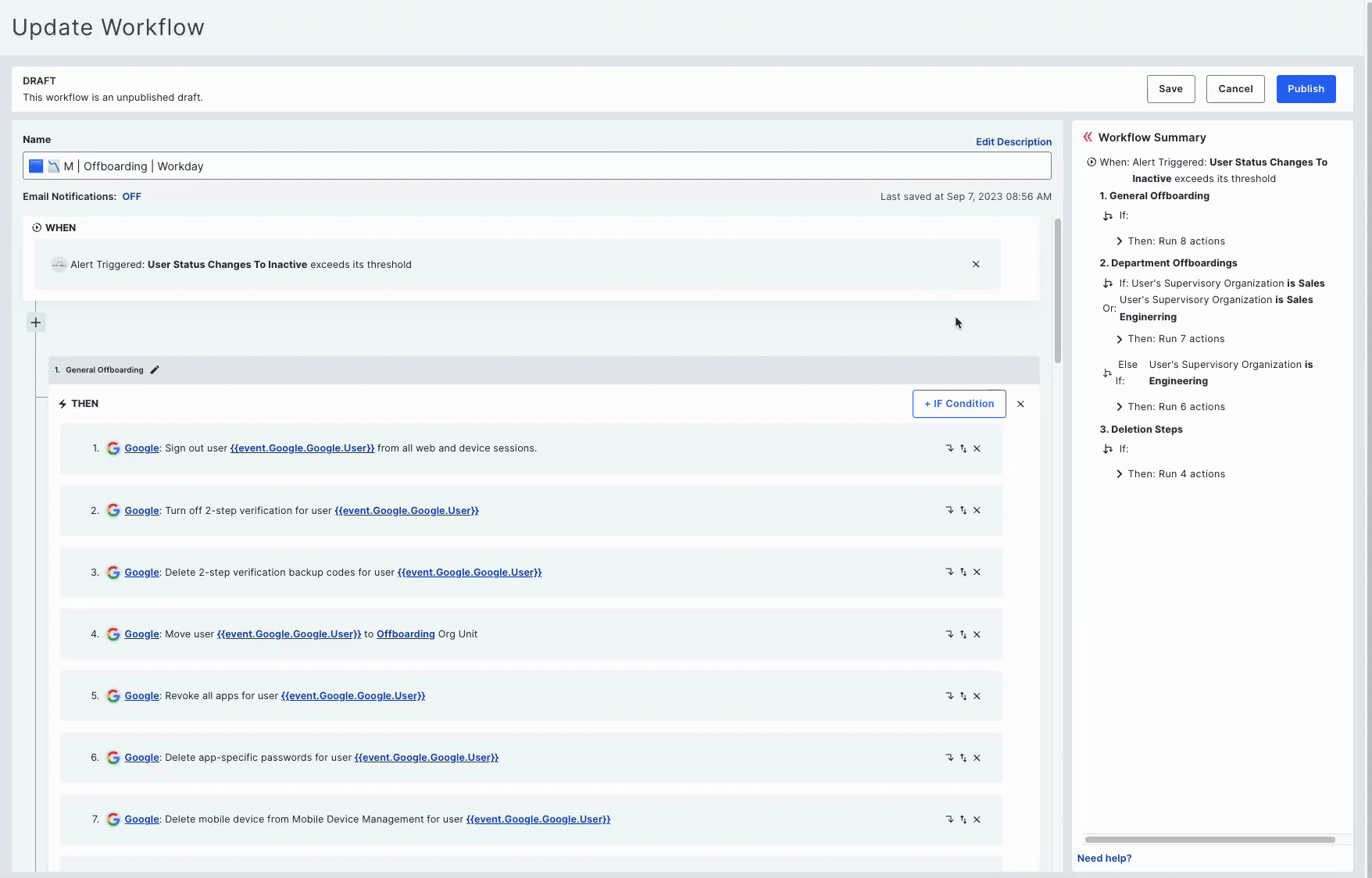What is SaaS spend management?
After years of fast adoption and unchecked growth, the results of the SaaS boom are SaaS sprawl, inefficient spending, and poor license management. But if you’re still getting by with spreadsheets to manage SaaS spend, your IT team is lacking the data and the tools to optimize software spend effectively.
So exactly what is SaaS spend management, what are the common pain points associated with vendor management, how does it help, and what best practices and tools should organizations consider?

At a high level, SaaS spend management is the practice of optimizing SaaS stack costs. It involves SaaS cost policy creation and management, app discovery, usage monitoring, cost analysis and allocation, contract negotiation, as well as license optimization according to usage, entitlements, and employee sentiment.
SaaS spend management is a subset of a larger set of SaaS management tasks, and according to Gartner, there are seven main functions:
- Discover: Uncover sanctioned and unsanctioned SaaS use and cost
- Manage: Centralize multi-SaaS configuration and policy management within a single console
- Automate: Simplify SaaS administration with turnkey configuration and policy templates, workflow engine and intelligence-driven actions powered by AI/ML
- Optimize: Analysis, insights, alerting, and automation to optimize SaaS cost and entitlement (licenses)
- Protect: Analysis, insights, alerting, and automation to protect organizational identities and data within SaaS. Also includes ensuring SaaS policies and configurations are compliant with corporate, security, or regulatory standards
- Govern: Foundational capabilities that include reporting, alerting, and measuring SaaS availability, as well as the breadth and depth of integrations with SaaS apps and other tools
- Enable: Availability of an employee-facing application store or catalog to simplify SaaS requests. In addition, analysis, insights, and alerting to help drive SaaS adoption and maximize ROI
Common SaaS spend management pain points
It’s easy to see how we got here: employees get a new SaaS app with 5 minutes and a credit card.
Five years later and the only trace of those employees who have come and gone is a mysterious, needlessly cluttered SaaS stack. This leaves organizations with unnecessarily bloated bills and an IT management nightmare - a nightmare that spreadsheets simply can’t tame.
This is what SaaS spend management is designed to tackle. But choosing the best solution requires understanding how much your organization experiences typical spend management challenges like:
- Lack of visibility into granular SaaS spending. To clearly see how much an employee and department uses each SaaS app by license tier, IT must login to each native console, view logs, and then make sense of it by allocating costs according to accrual accounting standards. Spreadsheets are ineffective due to data overload and lack of automation for cost allocation. (Not to mention Shadow IT can be impossible to find with manual work alone.)
- Difficulty keeping track of SaaS contracts. Each SaaS app contract comes with its own terms, renewal periods, and dates to track. Some require a 60-day notice to terminate, while others auto-renew with currently (and probably overpriced) pricing. Multiply this task by the number of apps your company uses, and it’s easy to see why spreadsheets struggle to keep up, leading to missed renewals or inadvertent auto-renewals.
- Too many redundant accounts or apps solving the same use case. Up until recently, most companies' policies allowed departments or employees to buy an app without involving IT. Organizations then found themselves with many different accounts of the same app, or many apps with a similar use case, driving up costs and management overhead.
- No automated method to standardize on sanctioned SaaS apps. Reining in multiple accounts and use cases into a single, organization-wide standard is no simple task. IT holds multiple meetings with all stakeholders, determines important criteria for the standard, and proceeds to move employees to new organization-wide standard SaaS apps – all while hoping employees embrace the new standard. Since this can be a long and messy process, too many IT teams live with and support more apps than they should.
- Problematic to prove governance and compliance to spending and security policies. Proving compliance takes time. Even if there are SaaS spend optimization policies, IT needs to take the time to do periodic discovery, login into native consoles to view invoices and contracts terms and reconcile them with finance and legal. The task isn’t done nearly to the degree of precision and frequency that it should be. Thus, it’s hard to prove compliance.
- Too time-consuming for IT to manage SaaS users, spend, licenses, security, and compliance, as well as build the automations that eliminate waste. SaaS spend management problems are inextricably related to the greater SaaS management challenges. Without automating SaaS tasks, it’s impossible to have the time to properly manage the stack and its corresponding SaaS spend.
- Lack of employee awareness and training. Employees need to be aware of the company's SaaS policies and the importance of responsible software usage. Training programs can help educate employees on the risks of shadow IT and the benefits of using approved SaaS applications.
So which of these does your organization suffer from and where do you need the most help?
How SaaS spend management helps
SaaS spend management is a boon for the SaaS budget. By rightsizing the SaaS environment, IT eliminates license waste, inefficiencies in license tiers, and overspending.
But the gains don’t end with a rightsized SaaS stack and budget. Here are just a few other advantages you can expect.
- Reducing tech stack complexity simplifies management of it. Fewer apps mean fewer vendor contracts for legal teams to review and approve. Finance spends less time administering the contract and paying invoices. And IT and security reduce time spent to properly manage, secure, and support for users and data.
- Diminished Shadow IT as a result of enhanced visibility and control. By identifying and managing all SaaS applications, organizations can gain visibility into unauthorized software usage, minimizing the risks associated with Shadow IT (unapproved software used within the company). This improves security, reduces compliance risks, and ensures data integrity.
- Better employee experience. Employees get the SaaS apps they best know and like to use, giving the whole organization a productivity boost.
- Improved security and compliance. With a robust discovery process that accurately finds all SaaS apps that authenticate on a domain, blindspots are gone forever. IT can see an app as soon as it appears, complete the proper security reviews, and reduce risks of damaging read/write data access from a rogue app. Best of all, audit logs that never expire can prove compliance within minutes.
- An accurate spending picture of the entire SaaS stack. When SaaS app purchases are made, in cash-basis accounting, the transaction appears in accounting reports as expenses at the purchase date. While not wrong or illegal, it does not show an accurate view of costs. And it does not facilitate proper software spend planning and forecasting – particularly over multi-year contracts, either.
On the other hand, accrual-based accounting - that allocates software expense over time - is more appropriate. Of course, cash basis is common for smaller businesses. But regardless of organization size, the accrual approach enables organizations to know true software spend over time – by user, department, office location, or any other type of reporting your organization needs. - Enhanced budget forecasting and planning for software spending. Accurate data on SaaS spending enables more effective budgeting and forecasting. Organizations can predict future costs, allocate resources effectively, and make informed decisions about software investments.
SaaS spend management best practices
As we stated earlier, SaaS spend management is a practice. It’s an on-going set of activities, and never “one and done.” All organizations should:
- Create SaaS spend management policies to prevent overspending
- Continuously identify and eliminate sources of excessive spend
- Keep on top of upcoming contracts in a central repository
- Take advantage of automation to simplify SaaS spend management
Now, let’s detail what IT should do for each one.
Develop a SaaS spend management (e.g, Shadow IT) policy
A company-wide policy around SaaS spending should empower employees, while still protecting organizational resources. Your policy should aim to:
- Establish a list of critical applications that are forbidden for user sign up without IT. An example is an individual cloud storage account, even if it’s free
- Define types of SaaS apps, if any, to allow users to buy without IT support
- Educate users to first go to IT, instead of creating an account when they need an app
- Document consequences when there’s a user violation
- Create SLA requiring timely IT response to SaaS apps requests
Uncover and cut sources of wasteful SaaS spending
Finding wasted SaaS spends sounds a lot easier than it is, as wasted SaaS spend tends to lurk throughout your SaaS stack. To kick off SaaS spend optimization, are a few tasks that can lead to SaaS spending optimization:
- Find and consolidate the same SaaS app used within different accounts. Consolidating these accounts is one of the easiest ways to lower costs without disrupting users.
When multiple employees or departments create accounts for the same app, no single account qualifies for negotiated deals and volume pricing. In addition, your enterprise misses out on higher volume license tiers that often bring preferred features, functionality, and support. By consolidating multiple accounts, you’re certain to find savings. - Identify unused and underutilized SaaS app licenses. According to G2 Track data, 53% of an organization’s licenses are underutilized, going without a login for one year. Instead of adding a new license, you can reclaim an underutilized one and redeploy it to someone else who will make the most out of it.
- Uncover similar SaaS applications solving the same use case. Solving the problem of overlapping apps -- with an organization-wide standard app – lowers costs like consolidating multiple accounts.
Standardization often comes with volume pricing, as well as additional benefits associated with higher license tiers. It brings management efficiencies, too. After all, IT, procurement, legal, and finance or accounting teams don’t need to support so many vendors, thereby lowering indirect SaaS spending. - Survey users to inform app consolidation decisions and speed cost reductions. Usage insights can point to how much an app is used, but user feedback gives insights on satisfaction and preferences.

Software renewals deserve a keen eye
Ding! You just got an email that another software contract auto-renewed. A true nightmare for anyone involved with software contracts.
You hear from plenty that avoiding auto-renewals is what will really save (not like it isn’t already obvious). What makes this hard to achieve is if all your contracts aren’t centralized.
With tools like BetterCloud, you can keep your contracts in a single central repository paired with automated intelligence like notifications to let you know when a contract is up for renewal in 30, 60, or 90 days so you have the opportunity to negotiate.
Beyond knowing when a contract is up for renewal, you’ll want to prepare for chatting with the software vendor. Best practices include monitoring software usage and evaluating whether the application is still a help or is it hurting your business.
Use automation to ensure continuous SaaS spend optimization
We often say that in SaaS, it’s a game of managing scale. Scale of apps, users, and the data they continually create. So, it’s an ever-changing universe, where SaaS and SaaS spend is constantly in motion. Without automation, it’s nearly impossible to maintain an optimized SaaS stack.
But with automation, workflows ignite savings and a positive return on investment.
For example, in addition to workflows to reclaim unused or underused SaaS licenses, you can run workflows to offboard departing users. In both cases, a workflow makes licenses available for immediate redeployment. This way, you avoid buying new ones.

An automated workflow can redeploy SaaS licenses.
A simple workflow makes it zero-touch. A user submits a help desk ticket for a new app access request and within minutes, the manager gets a message to approve the request and the user gets temporary permissions to get started on using that app. When a manager grants approval, the user gets permanent permissions. All without any manual intervention from IT.
How to choose the best tool for automating SaaS spend management
So what is SaaS spend management software?
It’s a SaaS system of record, or a single source of truth for the organization’s software resources. Within a single pane of glass, you view your organization’s entire SaaS catalog - of all apps currently or formerly available to users, the ability to navigate down to the department and user level to see who has which licenses, and to make the needed changes.
However, a centralized system of record for SaaS spend is not enough.
The best tools for SaaS spend management are IT force multipliers: they have extensive automation capabilities to allow IT to boost operational efficiency and magnify SaaS savings.
Here are some of the main features and functions to have in the tool you ultimately choose:
- No-code drag-and-drop automated workflow builder. Makes configuring automations for SaaS license management, help desk tasks, and user lifecycle management simple for those without programming skills
- Syncing with accounting, finance, and SSO systems for correct allocations. Integrates out-of-the-box with SSO vendors, commonly used SaaS apps, accounting apps, and help desk ticketing systems
- Robust discovery. Accurately identifies all commercial SaaS apps that authenticates to your domain and catalog all apps (free or paid) in real-time to keep Shadow IT in check
- Contracts repository. Centralizes management of vendor contract, users, user permissions and access for each SaaS application
- Detailed, flexible reporting. Shows SaaS spend by user, department, app, license cost benchmarking and more, enabling IT to choose how they want to see SaaS spending
- Employee pulse surveys. Collects feedback, at a click of a button, around employee satisfaction on your SaaS stack to ensure good renewal decisions.
- Large libraries of pre-built integrations, workflow templates, and out-of-the-box actions. Makes automating nearly any SaaS management or spend management task fast and easy.

Why end-to-end SaaS management platform BetterCloud is best for spend management

To truly manage SaaS spending, enterprises need a 360-degree view of all relationships with SaaS, including vendors, users, apps, security, automations, and spending. This is why organizations need BetterCloud, a complete and insights fueled platform for end-to-end SaaS management for IT.
Offering market-leading functionality, the world’s most complete, end-to end SaaS management platform gives IT teams:
- Complete discovery of your entire SaaS stack, including paid and free licenses
- Comprehensive control over applications, licenses, users, contracts, and SaaS budgets
- SaaS file security that builds guardrails, not gates to maintain balance of security and employee productivity
- Employee sentiment surveys to operate a SaaS stack that keeps employees happy and productive
- Detailed logging for audits and compliance that never expires
- Most complete automated onboarding and offboarding functions
- Extensive automation capabilities for maximum efficiencies for optimizing SaaS spend, managing licenses, onboarding and offboarding users, and fulfilling some help desk tickets. Create custom, unlimited workflows to automate nearly any task or process, with over 70+ pre-built integrations and 1000+ actions provided out-of-the-box.
Need some help?
We all do from time to time. Managing SaaS spend, apps, users, licenses, vendors, and automations is hard.
Book a product tour of BetterCloud to see how it’ll help, take a self-guided interactive tour of our app, learn from our Slack community, browse our resources, or check out our return on investment calculator.

